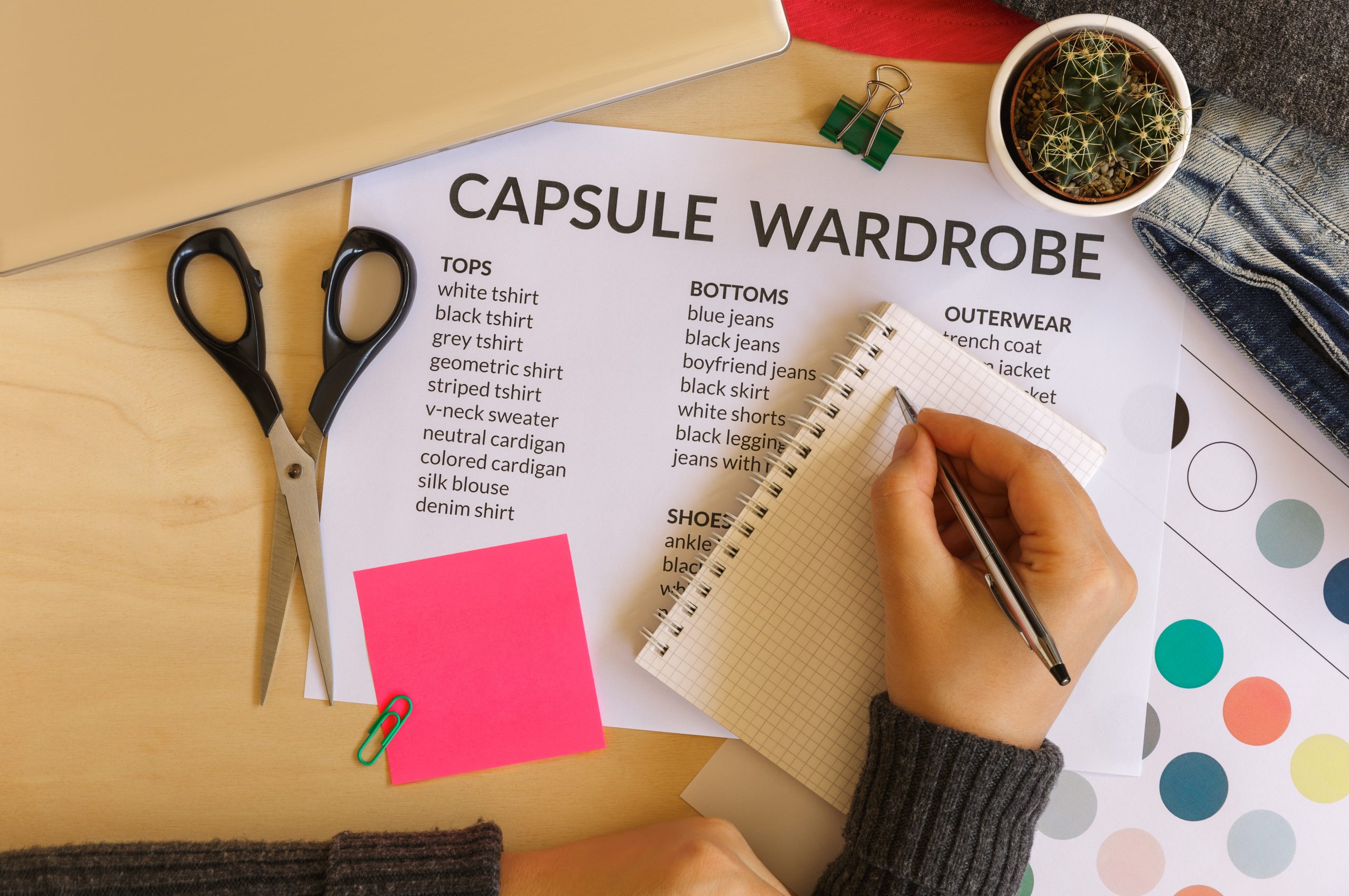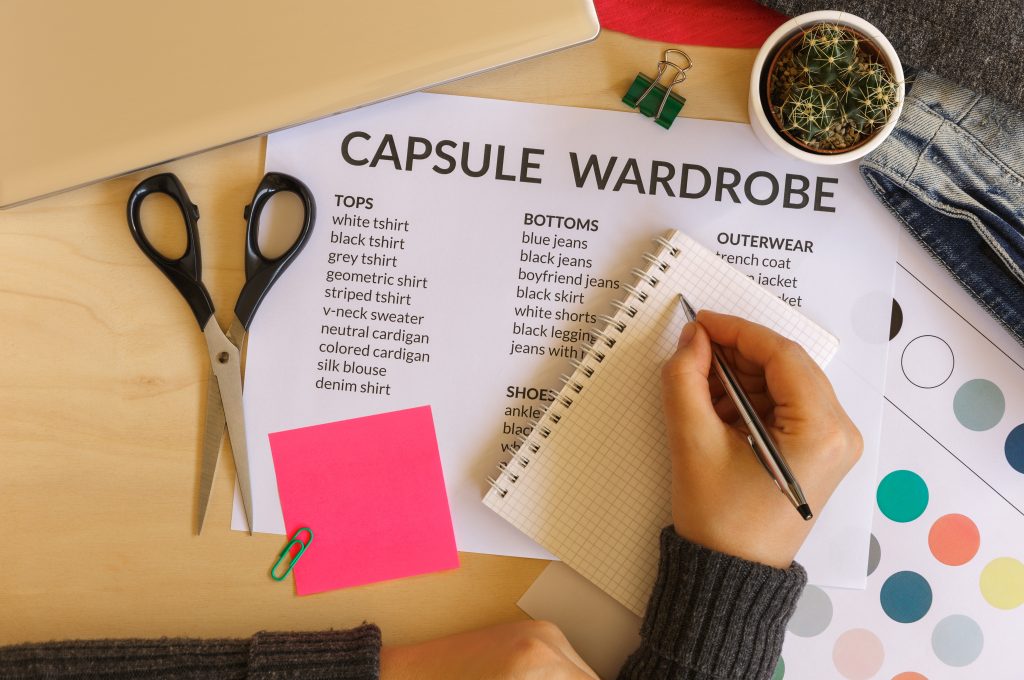Gucci, Jil Sanders, Courrèges. The SS25 runways demonstrated that fashion is experiencing a shift toward intentionality, sustainability, and timeless style. From tailored silhouettes and monochromes worn by Victoria Beckham to the polished minimalism of Meghan Markle, Duchess of Sussex, let’s chart the rise of minimalist fashion to it’s contemporary version.

Courreges SS2025
Defined by clean lines, neutral tones, and a “less is more” philosophy, the minimalist movement appeals to those seeking a clutter-free wardrobe and timeless elegance. Minimalist fashion isn’t just about stripping the excess; it’s about discovering freedom in simplicity, confidence in intentionality, and beauty in the essentials. A lifestyle movement that empowers us to focus on what truly matters: quality, versatility, and the art of dressing with purpose.
The rise of minimalist fashion reflects a broader societal shift towards intentional living. As consumers grow increasingly mindful of sustainability, overconsumption, and personal style, many are gravitating towards simplicity. This minimalist approach isn’t just a passing trend—it represents a lifestyle that values quality, versatility, and practicality.
Per BoF: ‘Quiet luxury’s moment in the zeitgeist may be over, but the trend left in its wake a thriving market for minimalist, approach-ably chic clothes with just the right amount of design: a black blazer with a uniquely-cut lapel, say, or a jersey top with an intricately-draped neckline. No brand has capitalised more on that desire than Mary-Kate and Ashley Olsen’s The Row, which last month raised a funding round that valued the brand at over $1 billion.’
Origin and history of minimalist fashion
Minimalist fashion, characterised by clean lines, neutral tones, simple silhouettes, and the “less is more” philosophy, has roots in cultural, artistic, and social movements, and its development can be traced through historical periods and influential figures.
Minimalist fashion has its foundation in the minimalist art and design movements of the early twentieth century, particularly influenced by The Bauhaus Movement. Originating in Germany, the Bauhaus advocated functionality and simplicity in design. The idea of stripping objects to their essentials carried over into fashion, promoting clean, structured styles. The broader modernist movement rejected excessive ornamentation and embraced simplicity, symmetry, and clarity in all forms of art and design. These artistic principles laid the groundwork for a functional and minimalist approach to fashion.
Per Utiopast: ‘The term originates from the artistic movement that appeared in the 1960s in New York when a group of artists, including Donald Judd, John McCracken, Agnes Martin, and many others, “rejected the traditional representations in painting and sculpture and chose to pursue the new mode that owed as little as possible to the physical existence of an object”. Deriving from reductive aspects of Modernism, Judd described his work as “the simple expression of complex thought”, which sums up the aesthetic as it exists within fashion, too.’
The Sixties witnessed a cultural shift toward clean and futuristic designs. Key influences include fashion designers like André Courrèges and Pierre Cardin. These pioneers introduced sleek, geometric, and futuristic silhouettes that embraced simplicity while rejecting the elaborate, heavily structured designs of the previous decades. Fascination with technology and space exploration also contributed to minimalist styles, with garments often showcasing a stark, clean, and unembellished aesthetic. And, the era of social and political change inspired many to reject excess and embrace the simplicity of minimalist lifestyles.
The Japanese minimalist movement, radicalised and democratised the fashion industry in the Eighties. Yohji Yamamoto, Rei Kawakubo and Issey Miyake introduced avant-garde minimalism with monochrome palettes, deconstructed silhouettes, and a focus on austere craftsmanship. “It wasn’t until the 80s and the Japanese that people really wore black,” Prof Wendy Dagworthy, head of fashion at the Royal College of Art, told The Guardian. “Before that it just had beatnik connotations. Now, it makes you feel safe.” The impact of the Japanese designers on the minimalism movement was substantial; they provided a relevant alternative to the glamour of the decade and revolutionised the way we view clothes.
Minimalism gained prominence during the Nineties. Donna Karan created corporate-ready pieces for a generation of women that was entering the workforce in greater numbers than ever before. As creative director of Céline, Phoebe Philo’s modern approach to simplicity and Armani’s clean lines changed how women dressed. Calvin Klein and Jil Sander popularised the minimalist design aesthetic with emphasis on tailored garments and functionality. During this time, minimalism also became a cultural response to the overindulgence of the 1980s. The understated elegance of minimalist fashion became a rebellion against the extravagant styles of the previous decade.
The next stage of minimalism was deconstructionism. Maison Martin Margiela became known for its deconstruction techniques, where volumes ere reinvented, shapes were modified, and garments’ original use and movement were playfully transformed. Margiela’s vision was to maintain the focus on its technical brilliance and its anti-fashion values and anti-status symbolism. In the late 1990s, Hussein Chalayan’s intellectual, scientific approach to fashion brought a futuristic aspect to minimalism.
In the twenty-first century, minimalist fashion became a global phenomenon, influencing everything from high fashion to fast fashion. Several factors contributed to its resurgence. As awareness of environmental issues grew, consumers embraced minimalism as part of a sustainable lifestyle. Capsule wardrobes, focusing on quality over quantity, have become increasingly popular. The minimalism movement became a responsible way of fashion consumption, with designers such as Stella McCartney, Phoebe Philo for Celine, Haider Ackermann, or brands such as Uniqlo, leading the way.
The rise of the tech industry introduced new cultural icons like Steve Jobs, whose signature minimalist style i.e. black turtleneck and jeans became synonymous with innovation and simplicity. At the same time, wardrobes have relaxed since the pandemic. There’s more of a requirement for clothes that are “responsive to everyday life,” but still make you look good. The same consumer who might have bought a pair of Jimmy Choo or louboutin stilettos pre-pandemic might instead invest in a great cashmere sweater.
Per W: ‘Today’s minimalist fashion owes a crucial debt to the avant-garde visual culture of the Twenties and the Sixties. During both of these periods… the “clean, streamlined shapes” so fundamental to modern art (Kasimir Malevich’s geometric paintings, Donald Judd’s steel boxes) and architecture (Le Corbusier’s celebration of “the cube, the sphere, the cylinder, and the pyramid”; the Pan Am Building’s mechanistic iron-grid facade) reappeared in fashion and forever changed its face. From Chanel’s unfussy little black dress to Courrèges’s and Cardin’s pared-down, futuristic shifts, the watershed styles of the Twenties and the Sixties folded contemporary artistic values—sleekness, simplicity, and progress—into “a vocabulary of easy dressing that would come to define modern fashionability…”.
Minimalism rules Spring 2025 catwalks
Gucci Spring Summer 2025 opened with a series of well-tailored pieces with clean cuts and quiet structure. Per W: From his debut this time last year, Sabato De Sarno made it clear that his vision for Gucci lived in another world compared to that of his predecessor. The designer told The New York Times, “I’m more real,” emphasising that rather than creating a universe, he was zeroing in on the one we have, aiming for wearable garments over any film or fantasy. His new spring 2025 collection, shown on a blood-red lacquered runway this afternoon in Milan, continued his sexy-but-down-to-earth dream…’
Courrèges Spring Summer 2025 collection was an ode to minimalism with its focus on sharp, clean-cut lines and asymmetry. A dramatic black leather cloak with an artistic back and hood set the tone for the minimalist collection, which came across as both space age and a nod to the Sixties in its structural simplicity. Per Harpers Bazaar: ‘Philosophically speaking, this says loads about how Di Felice approaches the Courrèges legacy. He’s treated the brand’s distinctive space-agey 1960’s DNA with great reverence, understanding the importance of not reinventing the wheel but not regurgitating archival designs either. Instead, he nods to the Courrèges codes through shapes and silhouettes, updated and evolved to look utterly of the moment.’
Daniella Kallmeyer Pre-Spring 2025 is a study in modern minimalism. Per Vogue: ’Inspired by Pierre Cardin and Fortuny she deemed the collection ornate minimalism. “Not minimalism in a way that it’s without things, or quiet luxury, but really just paring something all the way back until it’s perfect and making it essential.” As a term, minimalism is a bit of a catch-all in fashion — often an oversimplification — but there’s so much more to a Kallmeyer garment than just that.’
At Sportmax, less is more. The Spring-Summer 2025 collection zeroes in on essentials — call it minimalism with a twist. The collection is a study in contrasts — black and white silhouettes with pops of aquamarine, citrine, and ruby. Sportmax takes its signature sharp tailoring and fluid draping to new heights, proving that, when done right, simplicity can be a form of luxury. Whether it’s structured outerwear, reimagined denim, or leather gowns, Sportmax plays with the balance of restraint and indulgence. With plunging necklines and daring slits, the collection invites you to embrace the fierce side of femininity, proving that less really is more.
Minimalist Fashion Is A Sustainability Hero
One of the most compelling aspects of minimalist fashion is its alignment with sustainable practices. By focusing on fewer, high-quality items, consumers reduce waste and save money by investing in garments that last for years. Minimalist brands also emphasise eco-friendly materials and ethical production methods, further appealing to environmentally-conscious shoppers. It’s not just about buying less—it’s about making intentional choices that reflect our values and contribute to a greener planet.
10 Tips for Building a Minimalist Wardrobe

What is a minimalist wardrobe?
A minimalist wardrobe, often called a capsule wardrobe, is a curated collection of versatile apparel designed to meet our lifestyle needs while reducing excess. It typically includes neutral, high-quality basics that can be easily mixed and matched to create multiple looks.
How many pieces should a minimalist wardrobe have?
While there’s no fixed number, most minimalist wardrobes contain between 25 to 50 pieces, including tops, bottoms, outerwear, and shoes. Accessories, workout gear, and undergarments are excluded.
How do I start creating a minimalist wardrobe?
Start by decluttering the current wardrobe. Remove items that don’t fit, or don’t align with the current style. Afterward, build a core collection of versatile basics that can form the foundation of the wardrobe.
What should I include in a minimalist wardrobe?
A minimalist wardrobe typically includes basic tops, jeans, trousers, skirts, layering pieces like cardigans, or blazers, outerwear, shoes and a few essential accessories like a belt, scarf, or simple jewellery.
How do I choose colours for a minimalist wardrobe?
Focus on a neutral colour palette like black, white, gray, beige, and navy. Add a few accent colours.
What are the benefits of having a minimalist wardrobe?
Some benefits include saving time and energy when choosing outfits, reducing decision fatigue, lowering expenses over time, contributing to sustainability by consuming less and creating a cohesive, polished personal style.
How can I ensure quality when selecting clothes?
Look for high-quality fabrics like cotton, wool, linen, or silk, durable stitching and finishes, and timeless designs that won’t go out of style. Investing in fewer, better-made items ensures they last longer and look better.
How do I transition to a minimalist wardrobe without wasting money?
Transition gradually by using what we already own, selling or donating excess items, and replacing worn-out pieces with versatile, high-quality alternatives.
How do I avoid impulse buying while maintaining a minimalist wardrobe?
To avoid impulse purchases, stick to a shopping list based on your wardrobe needs, wait 24-48 hours before making a purchase to assess if it’s necessary, avoid trends and focus on timeless pieces.
Can I express my personality with a minimalist wardrobe?
Absolutely! Minimalism doesn’t mean boring. Incorporate personal style through accent colours, unique accessories and signature pieces while staying aligned with the minimalist philosophy.
Conclusion: A Fashion Revolution Rooted in Simplicity
The rise of minimalist fashion isn’t just a fleeting trend—it’s a reflection of deeper cultural shifts toward sustainability, mindfulness, and authenticity. By embracing fewer, higher-quality pieces, you not only elevate your personal style but also contribute to a more sustainable and fulfilling lifestyle. Minimalist fashion reminds us that sometimes, less truly is more.
Actionable Takeaways:
- Invest in timeless staples that suit your lifestyle.
- Focus on quality over quantity when adding to your wardrobe.
- Declutter your closet to make room for versatile, functional pieces.
- Embrace neutral tones and simple silhouettes for effortless elegance.
- Support ethical and sustainable brands to align your wardrobe with your values.

Jasmeen Dugal is Associate Editor at FashionABC, contributing her insights on fashion, technology, and sustainability. She brings with herself more than two decades of editorial experience, working for national newspapers and luxury magazines in India.
Jasmeen Dugal has worked with exchange4media as a senior writer contributing articles on the country’s advertising and marketing movements, and then with Condenast India as Net Editor where she helmed Vogue India’s official website in terms of design, layout and daily content. Besides this, she is also an entrepreneur running her own luxury portal, Explosivefashion, which highlights the latest in luxury fashion and hospitality.











